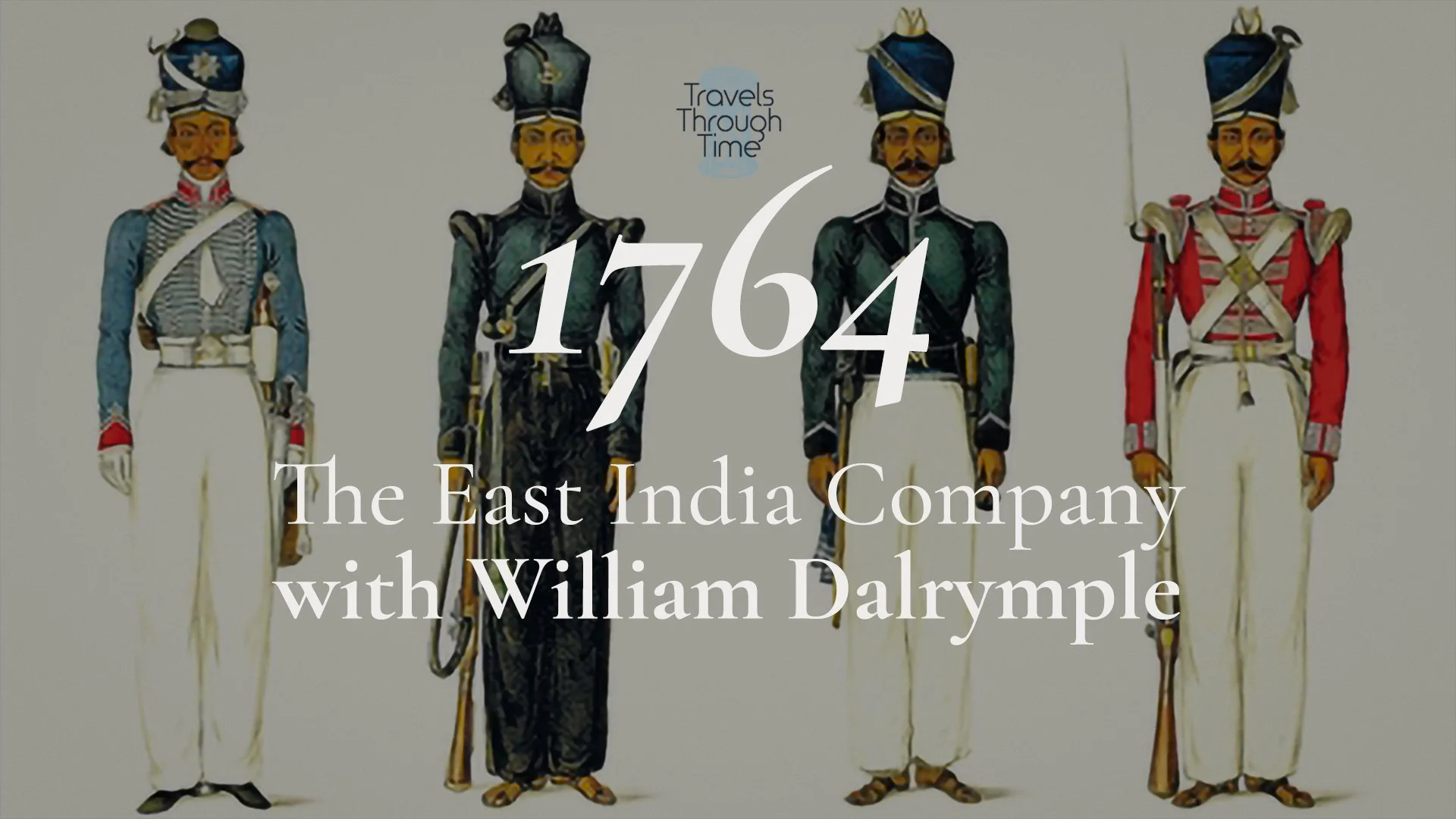The first English embassy to India: Nandini Das (1616)
Nandini Das, author of Courting India
The relationship between England and India is deep and complex. In this episode the academic and author of Courting India, Nandini Das, takes us back to a significant moment at the very beginning of this relationship. She tells us all about Sir Thomas Roe, the adventuring courtier who led the first English embassy to India.
*** [About our format] ***
Throughout the sixteenth century the world became increasingly global. As the Spanish colonisation of the Americas gathered pace in the west, and Portuguese activities deepened in the east, other nations like the Dutch and English considered how to find their own profitable places in this new emerging world.
By the early 1600s this process had formalised in England with the establishment of joint stock corporations like the East India Company, who sought to emulate the successful voyages of the Dutch. After a number of successful sea battles against the Portuguese off the Indian coast, the decision was made to consolidate English presence in the region even more with an official embassy to the Mughal Empire.
Emperor Jahangir weighing his son Khurram in gold (Wiki Commons)
The figure chosen for this novel and daunting mission was called Sir Thomas Roe. Roe was an Oxford-educated courtier and MP in his mid-forties with something of an adventurous past, Several years earlier he had lost much of his fortune on an ill-starred voyage to South America. The prospect of an embassy to India, therefore, offered him the chance of redemption. In 1615 he embarked for the East.
A fascinating encounter awaited Roe. India held a vivid place in the English imagination. It was known as a land of huge riches and vibrant stories that had featured frequently in English literature over the centuries. For those in the Mughal Empire, the fascination was not reciprocated. To most of them the English were an inconsequential people with little of real worth to offer them.
Roe’s brief was the change this perception. Loaded with gifts (among which were musical instruments and a carriage), he embarked on his travels. His final destination was Ajmer, where he hoped to gain an audience with the great Mughal Emperor Jahangir.
Jahangir is an intriguing character. As today’s guest, Nandini Das explains, he has always been easy to overlook in Mughal history as his reign falls between that of two more glorious rulers - Akbar the Great and Shah Jahan I, the builder of the Taj Mahal. The last decade, however, has seen a vast amount of new scholarship on Jahangir’s character and his abilities as a ruler.
One person who was very aware of Jahangir’s abilities at the time was Thomas Roe. In 1615 Roe knew that he was moving towards a meeting with the richest man in the world. He was a man who ruled over an empire of a hundred million people. In comparison Roe was leaving behind an almost-bankrupt monarch whose kingdom was considered by many to be peripheral to even the politics of Europe.
What followed, beginning in the year 1616, was a vivid series of encounters. Nandini Das guides us through all of these: from Roe’s arrival in Surat, to his first audience with Jahangir, and then on to a strange episode on the road that shook his sense of moral superiority.
Through these vignettes Das shows how complex these early encounters were. Drawn together they combine to create a striking portrait of a alluring moment, right at the beginning of England’s relationship with India.
***
Nandini Das is the author of Courting India: England, Mughal India and the Origins of Empire
*** Listen to the Podcast ***
Show Notes
Scene One: 10 January 1616, Mughal imperial court (Durbar), Ajmer. The first meeting between Roe and the emperor, Jahangir.
Scene Two: 24 May 1616, imperial private audience chambers, Ajmer. Roe desperately clings on to his English identity and has a problem with a runaway Englishman who wants to enter Mughal service.
Scene Three: 18 December 1616. In the Mughal imperial procession (lashkar) across Rajasthan, following the emperor Jahangir. Roe sees a different side to Jahangir.
Memento: A miniature portrait, belonging to Thomas Roe.
People/Social
Presenter: Peter Moore
Guest: Nandini Das
Production: Maria Nolan
Podcast partner: Ace Cultural Tours
Theme music: ‘Love Token’ from the album ‘This Is Us’ By Slava and Leonard Grigoryan
Follow us on Twitter: @tttpodcast_
See where 1616 fits on our Timeline
About Nandini Das
Nandini Das is professor of Early Modern Literature and Culture in the English faculty at the University of Oxford. Brought up in India, she was educated at the Jadavpur University in Kolkata, before moving to England for further study. Among other books, she is co-editor of The Cambridge History of Travel Writing.
A BBC New Generation Thinker, she regularly presents television and radio programmes, including Tales of Tudor Travel: The Explorer's Handbook on BBC4.
Grave of Emperor Jahangir
Tomb of Jahangir and Gardens
Listen on YouTube
Complimentary episodes
Elizabeth Stuart, Queen of Hearts: Nadine Akkerman (1620)
In Women’s History Month we take a look back at a figure who has been misrepresented by successive generations of historians. Elizabeth Stuart was the goddaughter of Queen Elizabeth I and sister of the ill-starred King Charles I of England.
Act of Oblivion: Robert Harris (1660)
We sit down with one of Britain’s great contemporary historical novelists, Robert Harris, to discuss a crucial moment in English history.
The Relentless Rise of the East India Company: William Dalrymple (1764)
William Dalrymple takes us on a tour of 1764 to try and explain how the East India Company became ‘An empire within an empire’.
The Quest for the Lost City: Edmund Richardson (1833)
The academic historian Edmund Richardson takes us back to the year 1833. This was, he argued, the year when James Lewis transformed from an ordinary soldier into a man called Charles Masson – a figure who would change history.













